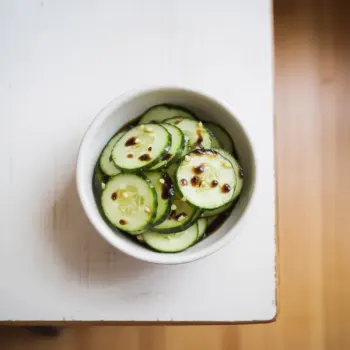
 45 minutes
45 minutesA simple recipe for creating a perfect pizza dough that's both chewy and flavorful.


Dry Active Yeast, dissolved in lukewarm water
teaspoons
All Purpose Flour, plain
cups
Kosher Salt, plain
teaspoons
Olive Oil, plain
tablespoons
1. Activate the Yeast
In a mixing bowl, dissolve 2 teaspoons of dry active yeast in a touch of lukewarm water, aiming for a creamy texture, which takes around 2 minutes.
2. Combine Dry Ingredients and Oil
Add 4 1/2 cups of all-purpose flour, 2 teaspoons of kosher salt, and 2 tablespoons of olive oil into the bowl. Mix until a dough starts to form.
3. Knead the Dough
Sprinkle a little flour onto a work surface and knead the dough for 3 to 4 minutes until it's smooth and elastic.
4. First Rise
Divide the dough into four equal portions, roll each into a ball, and let them rise on a baking sheet covered with plastic wrap or a kitchen towel in a warm spot for about 30 minutes.
5. Refrigeration Option
Optionally, refrigerate or freeze the dough balls individually wrapped in resealable plastic bags for later use.
For an authentic pizza crust, use '00' flour if you can find it. This finely ground Italian flour will give you a silky, elastic dough that results in a tender crust with a nice crisp. If '00' flour is unavailable, go for a high-protein bread flour which offers a chewier texture due to its higher gluten content.
Invest in a pizza stone or steel. Preheat it in your oven at the highest temperature for at least 45 minutes to an hour before baking. This will give you that crisp, blistered crust that's often achieved in professional pizza ovens.
Allowing the dough to ferment slowly in the refrigerator (cold fermentation) for at least 24 hours (up to 72 hours) can significantly enhance the flavor and texture of the crust.
The water-to-flour ratio (hydration) significantly impacts the dough's texture. Aim for a hydration level between 60-70% for a balanced crust that's not too tough or too loose.
Less is more when it comes to toppings. Overloading can lead to a soggy crust. Also, consider adding delicate ingredients like fresh basil or soft cheeses after baking.




Comments (0)